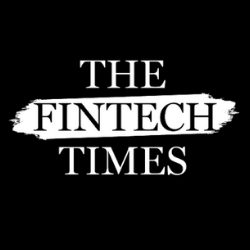COVID-19 has been a wake-up call for most industries. The fintech industry in particular has seen incredible change at an accelerating pace, from multi-million dollar VC investments to NFTs, new technologies and innovations have been born, reaching more people and offering more services than ever before. Veterans of the space were forced to adapt to the new normal while startups were thinking big and acting boldly.
Fintech startup and disruptor, TomoCredit is just one example. With a unique approach to credit, they’re opening the door for millions of consumers in the US that have been ignored by the traditional banking systems. Although the FICO system has been effective at assessing risk for a long time, TomoCredit is proving that one’s financial health is much more than a score. With no credit checks, fees, or APRs, TomoCredit caters to the underbanked and underserved individuals that are either new to the credit system or need help building healthy scores.
 Kristy Kim is the Co-Founder & CEO of TomoCredit, known for advocating for a more inclusive financial system.
Kristy Kim is the Co-Founder & CEO of TomoCredit, known for advocating for a more inclusive financial system.
What has been the traditional company response to financial technology innovations nationally?
We’re at a really exciting inflection point of incredible and rapid innovation, from cryptocurrency to open banking. But that doesn’t necessarily mean it’s always fair or inclusive, and consumers are being left behind. For example, in the way that our system is set up now, credit history and credit scores are fundamental to several momentous life experiences – from finding an apartment to rent, to buying a car or home, it’s all tied to having a good credit score. Well that may serve the majority of consumers, it doesn’t work for everyone and excludes millions from our financial system. TomoCredit was born from this idea after my own experience of being rejected from an auto loan, five separate times, despite having the capital to do so.
We’re proud of what we’ve created here at TomoCredit and are hopeful to see new innovations in the space that cater to similar audiences.
How has this changed over the past few years?
Although the innovations we’re seeing take shape across the industry have been rapid and seemingly sudden, they’re actually a natural progression of the space today. Finance is one of those industries that has a lot of legacy systems and structures in place, which means that, given the nature of startups, there’s a lot of room to revolutionize the space and quickly cater to the untapped markets.
Is there anything that has created a culture of change inside the company?
I co-founded TomoCredit alongside Dmitry Kashlev, and as two immigrants, we’ve experienced the barriers of the traditional financial system firsthand. Because of our experiences, we’re committed to creating a more inclusive financial system, and that starts from the inside out. Our team is a 50/50 split between men and women and we are extremely fortunate to have a diverse team from all around the world and from all different experiences – from student ambassadors and interns, all the way up to industry veterans with over 40 years of experience. Our team is a great example of striking a balance between fresh ideas and sustainable growth.
What FinTech ideas have been implemented?
Our day starts and ends with a plethora of processing, analytical, and operational tools. On the users’ end, we’ve established an intuitive and mobile-friendly sign-up process to reach consumers where they’re at. Everything from KYC checks to ID uploads and bank linking is made entirely seamless with key enablers like financial data aggregators, KYC vendors and AI verifications. On a more tactical level, we’ve recently expanded our key offerings with our latest funding round to include features like weekly AutoPay and High Credit Limits to boost credit scores fast. With a no credit-pull method and zero fees, we can provide credit to everyone, especially to those that are neglected by major lenders due to their lack of a FICO score.
What benefits have these brought?
Up until very recently, applying and getting approval for a credit card has been a tedious process tied with a “hard pull” on your credit. With the tools that we have built and those that we partner with, we are able to carefully determine risk, verify identity data, and run our underwriting within minutes. Our model has proven to be successful in more accurately determining creditworthiness, and assign limits all without ever even looking at one’s credit report. This is critical considering that about one in five American adults are credit invisible or are unscorable. That’s an entire subgroup of Americans – often immigrants and students – that are essentially barred from obtaining new lines of credit, which perpetuates an intense cycle of financial exclusion.
Do you see any other industry challenges on the horizon?
Any new idea or business has to educate prospective customers on how the business works. Another major industry challenge is gaining customer trust. Given the amount and frequency of cyberattacks, consumers are more wary of disclosing their personal information, and fintech technologies like Plaid and Finicity [bank integration partners] are still a foreign concept for a lot of customers. This process of adaptation will continue to exist in a loop as the current technologies become more mainstream and newer ones come into play. Within this industry, there will always be a chasm to cross.
Can these challenges be aided by Fintech?
The complexity of operations, management and control on the customers’ end is becoming more transparent and simple with time. Fintech technologies are fueling the rise of startups and enabling them to provide services more efficiently and affordably than ever before.
Final thoughts…
As far as industry standards go, it’s uncommon that leaders look like me – a female South Korean immigrant – which is why it was so important to me and my co-founder to build a team and an organization that actually represented the people we’re targeting and hoping to serve. One of the most exciting things about the fintech industry to me is the rate at which it’s creating change and disrupting decades-old systems, but that doesn’t come without its responsibilities to do better and build an environment that’s inclusive for everyone.



